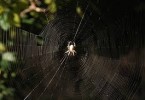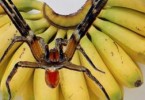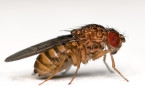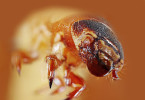Ants are insects present predominantly in a rural wooded areas but several species have long considered pests of the urban environment, the home environment and the food industries.
The harmfulness of these insects is connected to the conveyance of pathogenic microorganisms (Pseudomonas, Staphylococcus, Salmonella, Clostridium etc.)
On the food, due eventuality by the fact that the ants, scouring the ground, floors, and organic materials in their path, They may accidentally collect microorganisms, with their feet or mouth parts, which are then deposited on our food or surfaces processing
The most common species that could penetrate in the houses, in the warehouses, in the hospitals and in the buildings in general are the followings:
* ARGENTINIAN ANT (Iridomyrmex humilis)
* PHARAON ANT (Monomorium pharaonis)
* BLACK ANT (Lasius niger)
* RED ANT (Pheidole pallidula)
* Crematogaster Scutellaris ANT
Habits
They live in colonies (anthills) formed by one or more prolific queens and by many barren workers that occupy us of the management of the nest: they attend to the queen and the eggs and they feed the larvas and they take care of the pupas , they clean and repair the anthill , when it’s necessary, they pick and store the food.Few workers, called soldiers and morphologically different (they have a bigger head), occupy themselves of the colony’s defend.
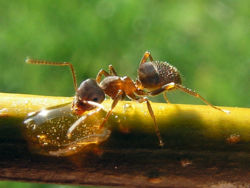
foto Wikimedia Commons
The ants are present during the whole year in the heated environments and generally they are more invading in the spring and summer months, when the food’s searching is one of the main activity of and the colonies are in phase of development.
The swarming of the wings, prolific males and feminine that will base new colonies, takes place during the summer. The ants are omnivore; some species prefer sugary food, others protein substances, others stockpile of seeds, others breed aphids and cochineals for the honeydew. When they find a source of food , for instance garbage, they always arrive there following the same path. The plan of struggle involves the individuation and the destroy of the nests.
To this purpose you can use poisoned food bait that act when they are transported inside the anthill. This method is little efficient when the food’s availability is elevated and the food’s choice varies.
The nests could be inside the infesting buildings, under the roofs, inside the walls, in the cracks, or in the external in the corner of the buildings or in the sidewalks, in the dung up areas, in the meadow or in the tree’s trunks and also in place far from the infestation.
When the ants come from the external and the nests are individualized it’s necessary the use of the residual struggle that serves to create provisional barriers and to solve temporally the situation even if with efficacy. Subsequently you should be valued by chance the techniques and the restructurings aimed to prevent their new access. The presence of ants in the bordering environments is index of scarce hygiene.
Morphology
Like other insects, ants have the body divided into head, thorax and abdomen. They have six legs, chewing mouth with strong jaws and elbowed antennae. Between the chest and abdomen ants have a narrowing derived from the structural modification of the first two uriti of gastro, nodular or squamiform, which are called post-petiole and petiole.
The most typical color of the ants is black, but there are many that vary from red to orange to yellow to green (Oecophylla smaragdina, Rhytidoponera and metal). The antennas are constituted by a basal part, constituted by the scape and the pedicel, and a flexible, said cord, comprising a series of segments whose number varies according to the species.
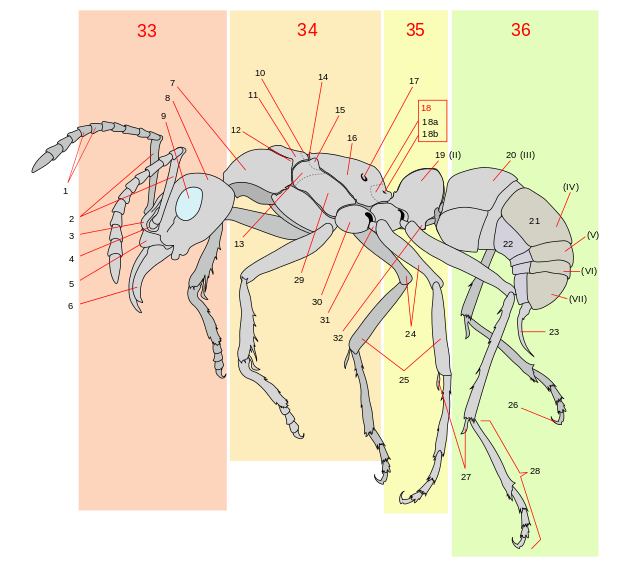
Life cycle
The eggs of the ants have no protective wrappings. The larvae are triangular, often without limbs and unable to perform complex movements, but can contract if threatened. The workers feed the larvae in their mouth regurgitating small drops of food through trophallaxis, or offering them trophic eggs. In some species the larvae, equipped with jaws, are able to crush sunglasses the membrane of the eggs, while in other are the same workers that break the eggs trophic and offer directly to the larvae. From the body and, in some species, special taste from around the mouth of the larvae, oozing fluids details and fatty substances like much to the workers and that these lick greedily.
The larva of ants secretes a bit of silk with which, when it is ripe, it weaves a cocoon in which to spend the pupal stage. This cocoon, to develop, should generally be buried by the workers.
Eggs, larvae and nymphs are assisted with great care by the workers, carrying them in the most comfortable of the anthill as necessary for their development. The care of children is the most of the work that takes place in the anthill. The queens do not work and live from fifteen to twenty years.
The workers live five to ten years; males, however, die after being paired. Ants live in societies that can be formed from a few tens or hundreds of thousands of units, up to a few million, but only in exceptional cases, that is, in an area inhabited by large animals with thick vegetation.
Over a third of exterminators in Italy declares that it considers the control of ants rather problematic to the point that many refuse requests for pest control and a significant minority declines almost all requests.
Among those who report difficulty in achieving good control many use insecticide sprays or dust while far fewer use bait or gel, an aspect that highlights the significant opportunities that modern techniques can offer.
In addition, such techniques as the use of soliciting or gel may offer a valid solution to the excessive number of re-operations that the exterminator has to do if it does not get satisfactory result.
Given the relative ease and speed of application of bait compared to other types of treatments, these techniques can help solve the problem relating to long response times and hence lower profits.
With a few drops of gel bait well positioned and / or some point of baiting, you can transform a problem, the resolution of which previously would have required a lot of time and patience, in full satisfaction of the customer, in a few days.
Mario Alessi

